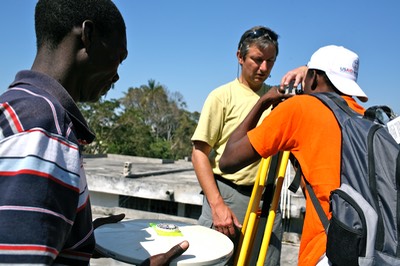On January 12, 2010, a magnitude 7 earthquake devastated Port-au-Prince, capital city of Haiti, and the surrounding areas. The exact number of casualties will never be precisely known but likely reaches 200,000. The estimated economic cost is close to $8 billion, about 100% of the country's GDP. Population exposure, poor building practices, and limited preparation played a key role in the tragedy.
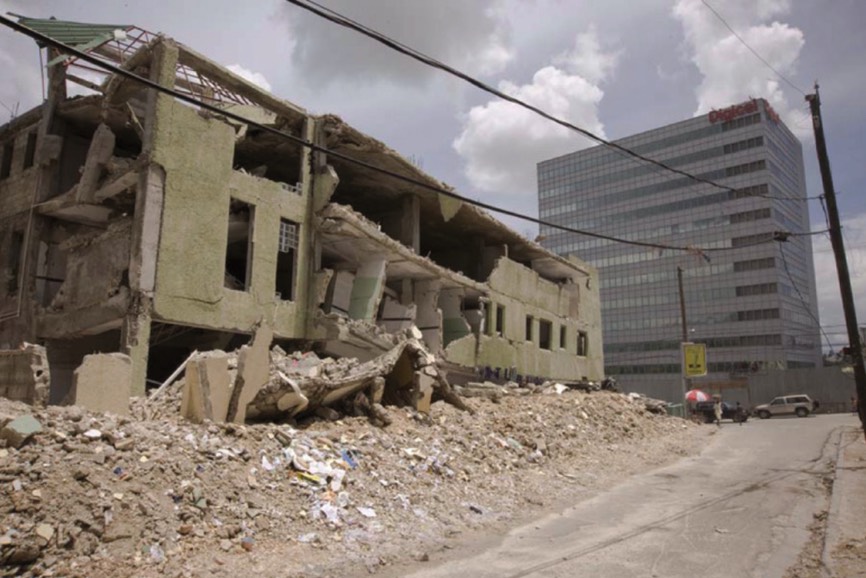
My research group has been studying the northeastern Caribbean with GPS geodesy since 2003 in order to better the interactions of tectonic plates at a transition from subduction (Lesser Antilles) to oblique collision (Hispaniola). Repeat measurements of survey benchmarks in Haiti and the Dominican Republic allowed us to quantify the rate at which elastic strain has been building up on major faults. This information, together with the dates and estimated magnitudes of historical earthquakes in the region, led us to conclude in 2008 that "the Enriquillo fault in Haiti is currently capable of a Mw7.2 earthquake if the entire elastic strain accumulated since the last major earthquake was released in a single event today" (Manaker et al., 2008).
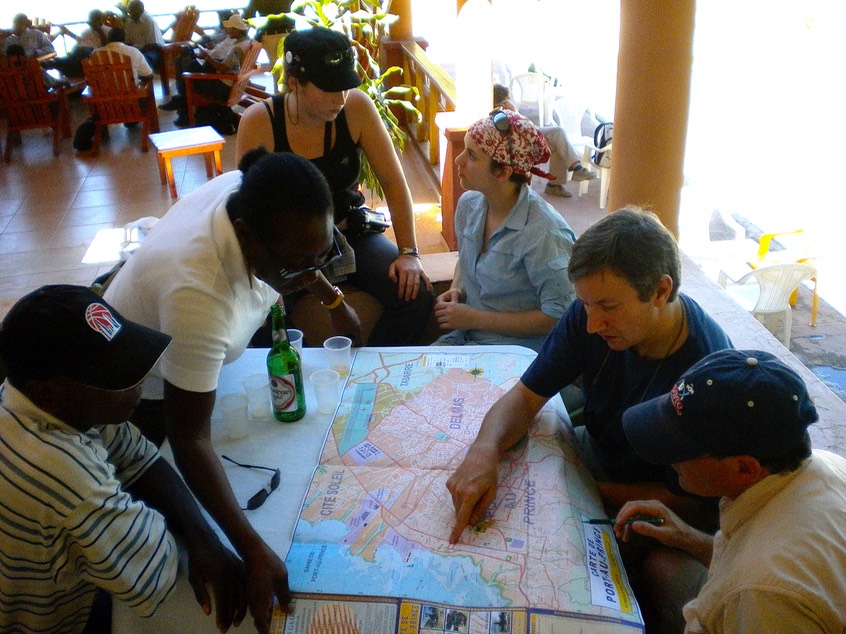
This work was performed in collaboration with the Haitian Bureau of Mines and Energy (BME), the Haiti Civil Protection Agency (DPC), and the National Center for Geospatial Information of Haiti (CNIGS). Its results were presented at several scientific conferences, as well as at private meetings with Haitian government officials and with officials from international organisations and bi-lateral cooperations operating in Haiti. Unfortunately, the earthquake scenario described in our 2008 publication, and presented at these meetings as a threat Haiti should prepare for, unfolded on January 12, 2010, and brought Haiti down to its knees.
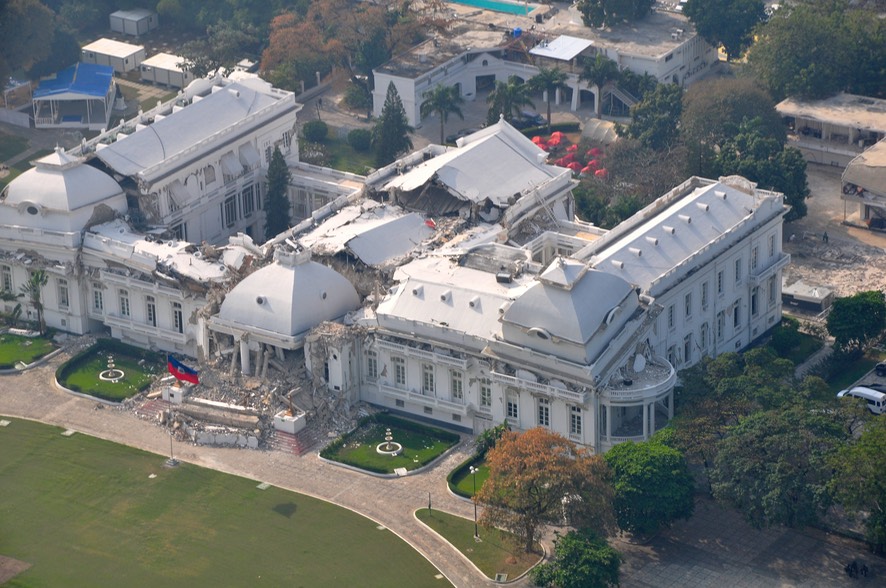
My research group quickly moved to Haiti after the earthquake to conduct an integrated geodetic, geologic, and remote sensing study of the event. The work was supported by the U.S National Science Foundation Geophysics Program (NSF/GEO/EAR) and the Americas Program in the NSF Office of International Science and Engineering (OISE). Technical support was provided by UNAVCO. Trimble, Inc., donated 6 sets of GPS equipment to the project. The Haiti cell phone company Voilà (now part of Digicel) provided logistical support, safe locations, and data communication for the continuous GPS instruments.
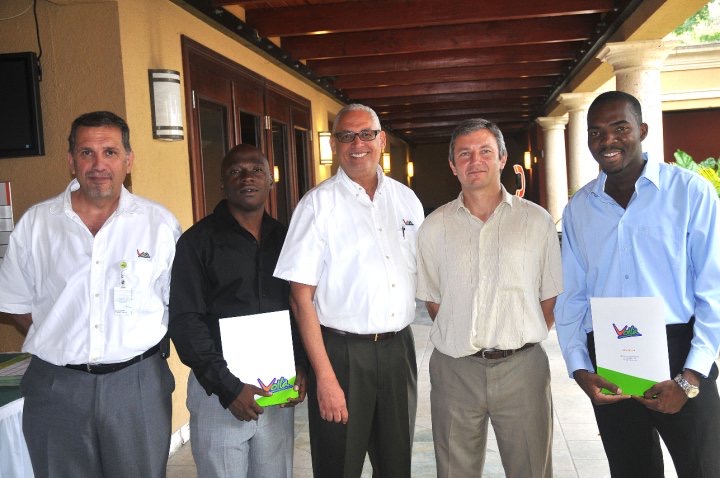
Our work showed that the earthquake did not rupture the Enriquillo fault, as initially assumed, but instead involved an unmapped north-dipping fault very close to it, which we names the "Leogane fault". We also found that the earthquake involved a combination of horizontal and contractional slip, causing significant vertical displacements that were oiginally not expected. As the Enriquillo fault did not release accumulated elastic strain, it remains a significant seismic threat for Haiti. Port-auPrince and its region are still sitting on a ticking bomb.
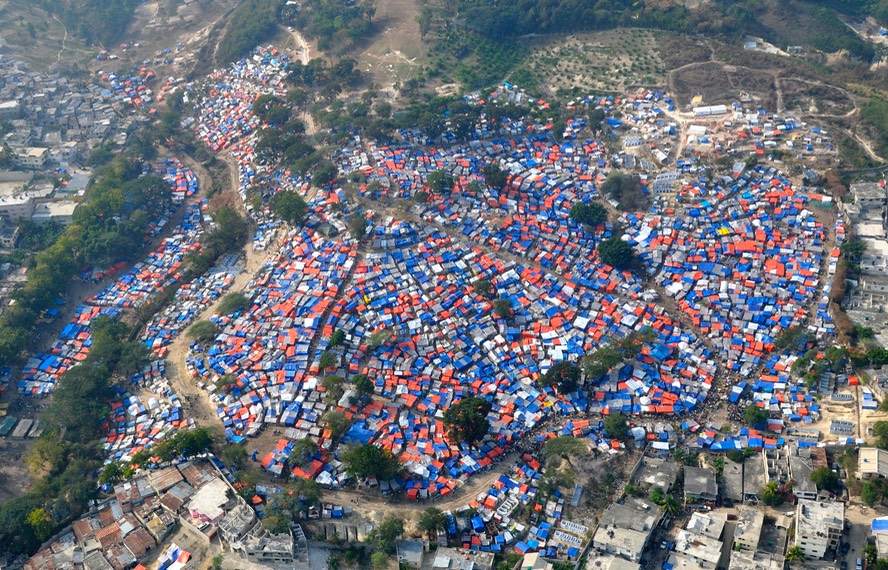
The extent of the disaster while scientists knew of the threat and had been warning about it was an eye-opener. I needed to understand what makes an effective message to decision makers, and wanted to see - in "real life" - how key decisions that involve environmental risks were made. I also wanted to offer my scientific understanding of hazards and risks to the reconstruction effort in Haiti and, in particular, to start training the next generation of Haitian earthquake scientists. I was offered a position with the UN in Haiti as science advisor, hosted by the U.N. Development Program. It was a hard, but enlightening experience. Also a rupture, a Fitzgeraldian "crack-up"...
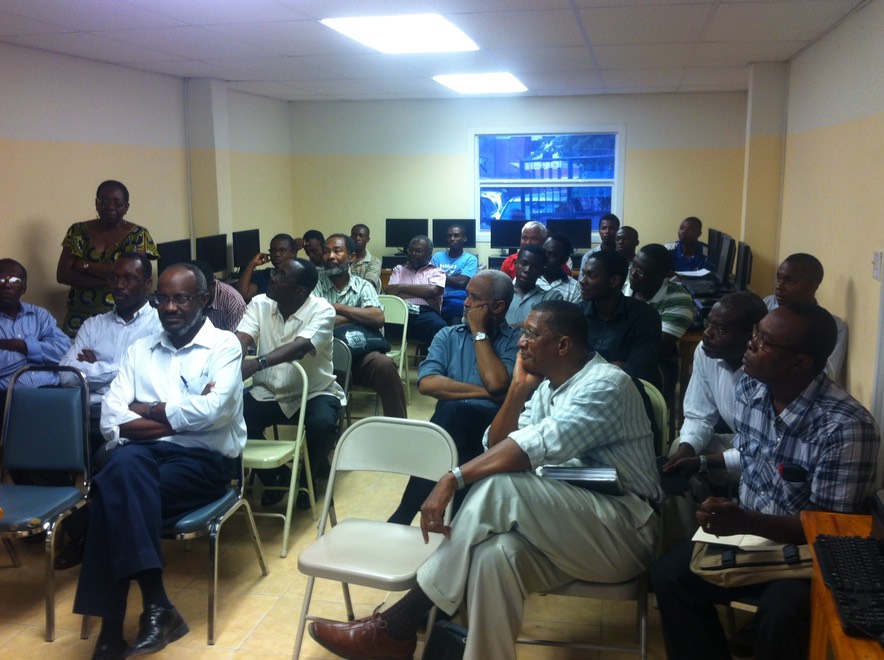
I believe I brought content to programs that would otherwise have had limited provisions for earthquake safety or risk prevention in general. Among the most important initiatives, I developped a seismic zonation effort, designed a seismic safety program for northern Haiti (together with Interior Minister P.A. Bien Aimé), facilated the interactions between international scientists with Haitian institutions, set the Bureau of Mines on the path to operating a national seismic network, provided training opportunities to Haitian engineers and scientists, and initiated risk prevention plans integrated into urban planing. This latter initiative has now taken off as a primary tool to integrate risk reduction into policies and actions. I am currently advising two Haitian PhD students and facilitated the integration of other Haitian students into international research groups.
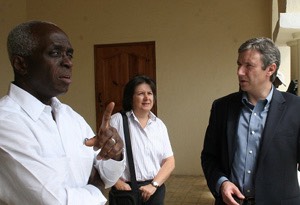
After two years in Haiti, I also realized the limited long-term benefit of international assistance, the "dance macabre" played by all parties, the waste, the unbearable lack of trust. I decided to bail out and return to academia, where my heart really lies and from where I hope I can continue supporting scientific and technical development in countries like Haiti, for the benefit of their people.
Below is a selection of links related to this 2-year experience in Haiti as a UN science advisor in the aftermath of the devastating January 12, 2010 earthquake.
Purdue researchers studied Haitian fault; warned of potential for a large earthquake (Purdue University, You Tube interview)
Lessons Learned From the 2010 Haiti Earthquake (American Geophysical Union, YouTube interview)
Haiti earthquake: It wasn't the fault of Enriquillo (American Geophysical Union, YouTube interview)
Scientists Return to Haiti to Assess Possibility of Another Major Quake (U.S. National Science Foundation)
On the Ground With Eric Calais, UN's Geophysicist in Haiti (Science Magazine)
Port-au-Prince menacée par un séisme bien plus dévastateur (France Culture)
5 Questions for Geophysicist Eric Calais on the Newly Discovered Fault in Haiti (Britannica)
Haiti Considers Future Quakes While Rebuilding (NPR)
Haiti to improve quake preparedness (Nature news)
More earthquakes are “unfortunately” expected in Haiti in the future (UN Multimedia)
UN seismologist outlines efforts to improve Haiti’s earthquake preparedness (UN Multimedia)
Haiti After the Earthquake: Eos Interviews Seismologist Eric Calais (American Geophysical Union)
